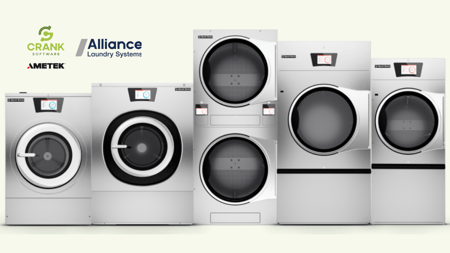From building emotional connections and neumorphism to cross-platform scalability, here are the top industrial GUI trends for 2021.
Any talk about industrial GUI development trends usually begins with a discussion of how users want a smartphone-like experience in every technology interaction. But does this apply to every market? Building and factory automation, SCADA systems, and public utilities don’t fit the smartphone model: their GUIs require highly trained users, demand accurate and easily understood data, and serve up consequences for incorrect action. In other words, chasing recent trends might work in point-of-sale interfaces, but do they have a place on the factory floor?
Let’s look at where industrial GUI development is headed based on our client experience, observations, and research.
1. Building an emotional connection with users
Users are individuals and individuals prefer interacting with technology when it provides a positive emotional connection. One secret to building this connection is to develop simple, unambiguous interface elements that make a GUI straightforward and a pleasure to use.
Another way is to make interfaces accessible and inclusive. When GUIs can be easily understood and readily used by people from a wide diversity of backgrounds with different skills and abilities, they build product loyalty with a large following.
Regardless of market, technology is best when it makes people happy and more efficient at their jobs. We expect to see more attention paid to emotional connection in industrial GUIs as time goes on and this will be a key differentiator for manufacturers.
 Aarron Walter’s pyramid of user needs (source: UX Planet)
Aarron Walter’s pyramid of user needs (source: UX Planet)
2. The democratization of industrial GUI building
Industrial products have long suffered from engineering-driven GUIs. However, the construction of GUIs is no longer strictly the realm of software developers as businesses everywhere are starting to appreciate the importance of design in their product interfaces. As a result, today’s software development tools make it much easier for designers and user experience (UX) experts to work closely with developers in a collaborative and iterative process, elevating the role of the designer, democratizing the process, and ensuring the best GUI for all products. Look for better and better-designed industrial GUIs as this trend continues to catch on.
3. Cross-platform development
Never has “write once, deploy everywhere” been so appropriate as it is now. In fact, cross-platform development is currently regarded as one of the most popular software development trends. Sharing GUI design logic across platforms has three main benefits in industrial markets:
- It allows management to expand the use of a product more easily – such as making a building automation system available on a remote tablet
- It allows manufacturers to release different capabilities and branding across their sub-brands (you can learn how Alliance Laundry Systems deployed one customizable GUI application across several of their brands here)
- It acts as a bit of insurance for the times when processors or boards are retired or encounter availability problems
Cross-platform GUI development is a trend that is already catching on in industrial, but we expect to see more of it as development time and cost pressures continue to ramp up.
4. Remote working for dev teams
New public health concerns and modern preferences for worker flexibility are just two of the factors influencing corporate policies on remote work, with many industrial companies opting to allow select employees – like software developers – this privilege. With more software development teams transitioning to distributed workforces, it’s important to give developers the tools they need to ensure success — tools that enable collaboration, communication, and task tracking.
We don’t expect this trend to go away anytime soon even as returning to the workplace becomes an option for more people.
5. Movement away from flat design
Flat design has dominated GUI development in recent years but that is changing. Animated illustrations, 3D graphics, new skeuomorphism (or “neumorphism”) and the like are among the many trends that are replacing flat design in consumer-facing products. Do these new approaches make sense in the industrial context?
Responsible design for industrial GUIs is about clearly communicating information and reducing cognitive load. This means being ruthless about removing unnecessary GUI elements that don’t add value.
You might think this means that many of the latest GUI design trends won’t be entering the industrial market anytime soon. Not so. Many of these trends can provide benefits to the industrial user albeit with a more carefully considered use and a lighter touch. For example, new skeuomorphism can make it easy to identify button edges and status, animations can provide clear clues as to operation success or failure, and 3D graphics can be a practical way to view certain processes and machine statuses.
This movement away from flat design will eventually make its way to the industrial market although it may not be adopted as thoroughly or as rapidly as some of the other trends.
6. Microinteractions
Trigger-feedback pairs or microinteractions have been used in web design for many years – scrollbars, buttons, and alarms that give users immediate feedback. They can be user-initiated or system-initiated but either way, provide a distinct visual feedback element. While microinteractions require more effort and thought to create a meaningful experience, they can help improve industrial GUIs by clearly communicating system status change and preventing errors. Because it’s a trend that beautifully supports the industrial prime directive of clear communication, we expect to see it more often.
7. Lack of UI/UX development resources
There’s an increased demand for UI/UX skills across the globe but unfortunately demand continues to outweigh supply. Estimates suggest there are anywhere between 8,000–24,000 UI/UX job openings worldwide today. Because the need for UI/UX designers has never been greater, it’s important to find a partner who can supplement your existing team with additional resources when required. We see companies increasingly open to seeking out industrial GUI professional services to fulfill their software development or design needs today than they have been previously.
We expect this trend to continue, even after newly trained individuals enter the job market to fill demand because professional services groups can provide highly skilled talent on demand, allowing companies to apply resources when and where they need them.
 Learn how Crank Professional Services helped Alliance Laundry Systems grow revenue for their clients
Learn how Crank Professional Services helped Alliance Laundry Systems grow revenue for their clients
Summary
Many recent trends in GUI development make little sense in the industrial context. However, when the right techniques and methodologies are properly applied, they can improve your product’s look and feel, increase performance, and reduce errors – making it an easier sale and encouraging users to engage with your product.
If you’re looking to adapt some of these GUI trends to your industrial software but need some guidance, let us know. With our experience in building attractive yet safety-critical interfaces, we’re happy to help.
.png?width=180&height=67&name=Crank-AMETEK-HZ-Rev%20(4).png)


